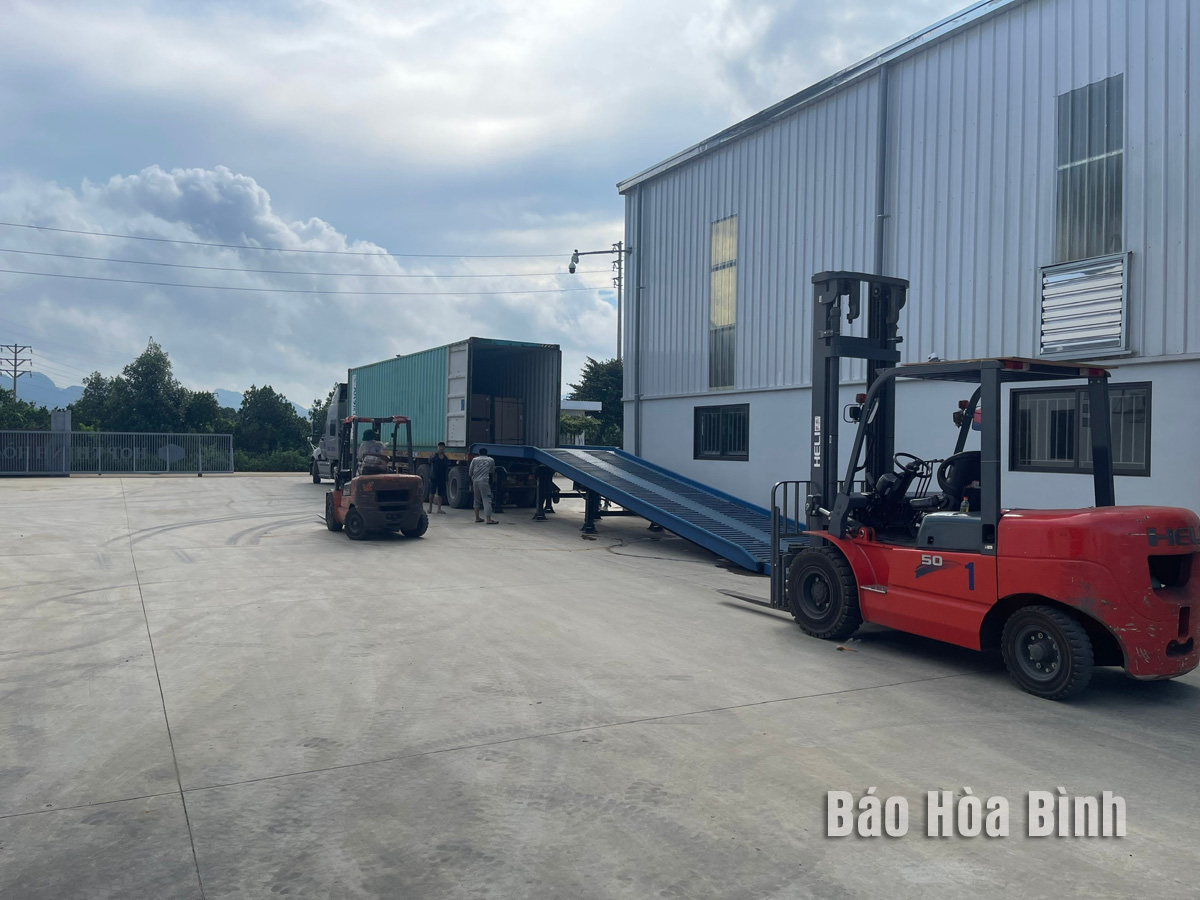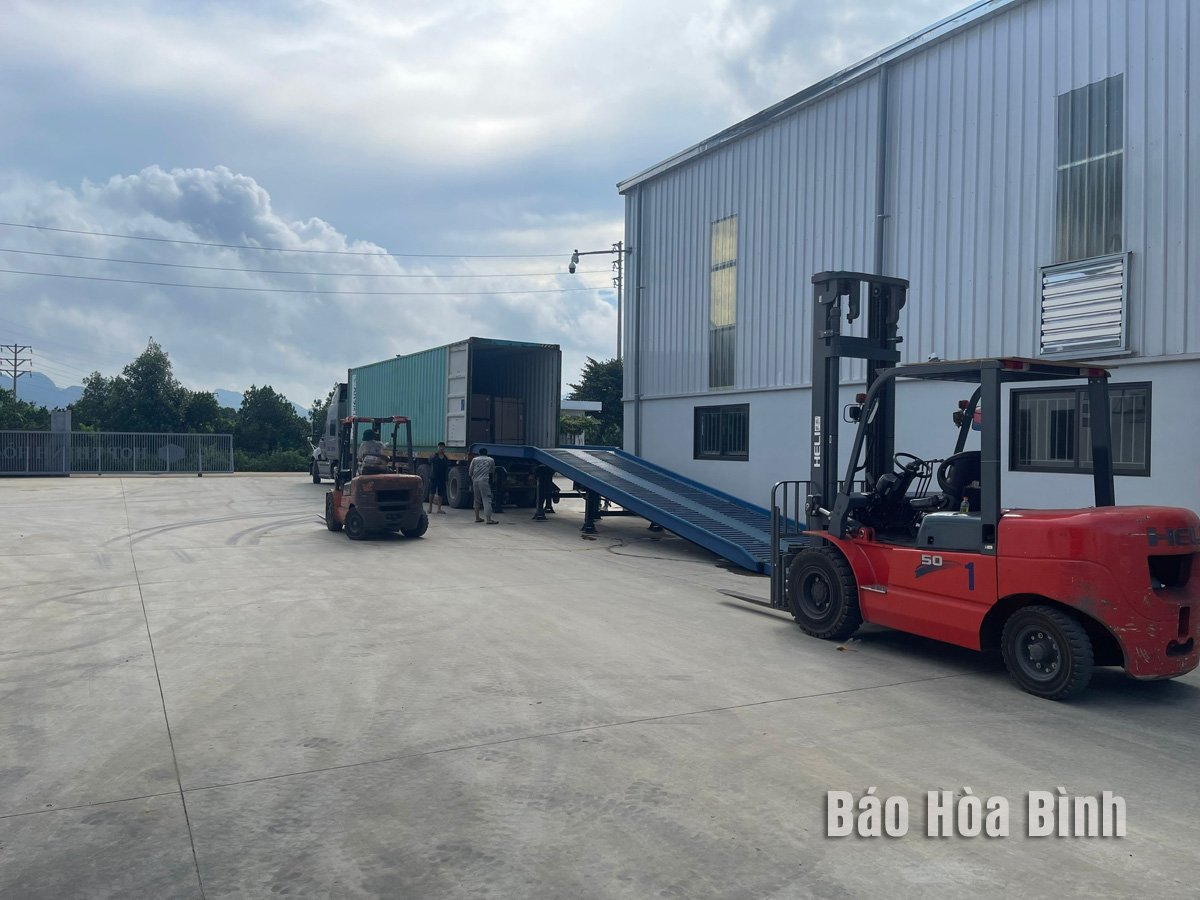
Determining industrial development as a driving force for socio-economic development, Lac Thuy district has stepped up the dissemination work to raise awareness of officials, party members, and people of the policy of forming and developing industrial clusters, while developing resolutions and action programmes, and including them in the local socio-economic development planning on promoting the development of these clusters.
Phu Thanh II Industrial Cluster (Lac Thuy) has an occupancy rate of nearly 87%.
In the district, there are seven industrial clusters included in the province’s master planning for the 2021 – 2030 period, with a vision to 2050, covering a total area of 398.12 hectares. Of the total, five are included in the provincial industrial and handicraft development plan to 2020, with an orientation to 2025, covering a total area of 282.25 hectares. The occupancy rate of Phu Thanh II Industrial Cluster is 86.87%, Thanh Nong Industrial Cluster 52.51%, and Dong Tam Industrial Cluster 30.29%.
To date, the industrial clusters have attracted 19 secondary investors, with a total registered investment of 1.4 trillion VND (56.3 million USD).
To promote investment attraction, the district focuses on completing, upgrading, and renovating infrastructure of industrial parks; investing in the construction of wastewater treatment plants; and reserving areas for planting trees. It also recommends authorities of all levels to prioritise licensing for investors with appropriate advanced technology and production sectors with little impact on the environment. At present, the construction of a wastewater treatment plant at Phu Thanh II Industrial Cluster has been completed.
Nguyen Van Hai, Chairman of the district People's Committee, said that in attracting investment to industrial clusters, Lac Thuy has a support policy for enterprises investing in high technology in production and business, and helps train human resources to meet the needs of enterprises. It also encourages businesses to employ local workers, diversify training forms, and link vocational training with job creation; while organising technical training for labourers, especially giving priority to members of households whose land is subject to land recovery for industrial development, helping them have stable incomes and ensure their lives.
In the coming time, the district will continue to implement concerted solutions to attract investment, maximise the support of the central and local administrations to complete the infrastructure system, and build and apply technical barriers in the process of reviewing and deciding on new projects with the aim of attracting quality investment, in line with the orientation of economic structure and industrial cluster infrastructure.
According to data from the Hoa Binh Provincial Party Committee, the industrial production index for the first six months of 2025 is estimated to have increased by 20% compared to the same period last year. This marks the highest year-on-year growth rate for this period since 2020.
In the first six months of 2025, Hoa Binh province’s export turnover was estimated at 1.145 billion USD, marking an 18.11% increase compared to the same period in 2024. Import turnover was estimated at $ 804 million, a 17.15% increase, which helped the province maintain a positive trade balance.
The lives of the ethnic minority farmers in Tan Lac district have gradually improved thanks to the new directions in agricultural production. This is a testament to the collective strength fostered through the professional associations and groups implemented by various levels of the district’s Farmers’ Union.
With the motto the "product quality comes first,” after nearly one year of establishment and operation, Muong village’s Clean Food Agricultural and Commercial Cooperative, located in Cau Hamlet, Hung Son Commune (Kim Boi district), has launched reputable, high-quality agricultural products to the market that are well-received by consumers. The products such as Muong village’s pork sausage, salt-cured chicken, and salt-cured pork hocks have gradually carved out a place in the market and they are on the path to obtaining the OCOP certification.
In the past, the phrase "bumper harvest, rock-bottom prices" was a familiar refrain for Vietnamese farmers engaged in fragmented, small-scale agriculture. But today, a new spirit is emerging across rural areas of Hoa Binh province - one of collaboration, organisation, and collective economic models that provide a stable foundation for production.
Maintaining growing area codes and packing facility codes in accordance with regulations is a mandatory requirement for agricultural products to be eligible for export. Recently, the Department of Agriculture and Environment of Hoa Binh province has intensified technical supervision of designated farming areas and packing facilities to safeguard the "green passport" that enables its products to access international markets.



